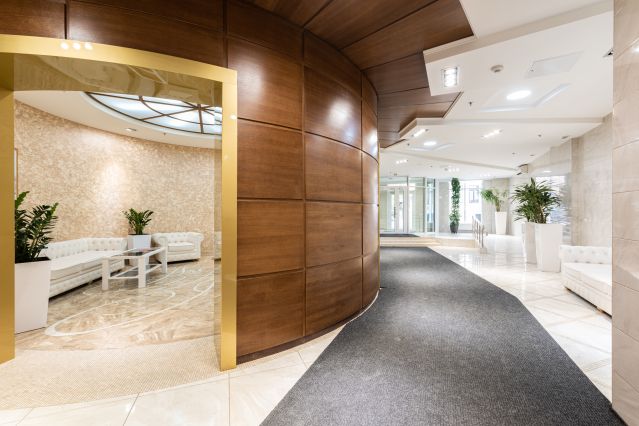Career
Forget WFH: The New Place to Work Remotely Is Better
Some new spaces offer beautiful settings, lots of amenities, and socialization.
Updated August 29, 2023 Reviewed by Abigail Fagan
Key points
- Working from home is popular, but there are disadvantages to being isolated.
- New options offer a daytime destination: a place to work that is more than a workplace.
- Aesthetically superior, with a suite of amenities, these spaces may become a new way to work remotely.

Working remotely, whether part time or full time, is now fully normalized in our work experiences. A recent McKinsey study reported that 58 percent of the U.S. workforce can now work from home at least one day per week, and 35 percent have the option to work from home full time. And apparently, it’s what we want: The same study found that 87 percent of those who could work from home did so. The benefits of being able to work outside of the office at least part of the week are well-documented. Workers have the flexibility to manage personal needs more easily, reduce their commute time, and in some cases, even relocate to a place of their choosing.
However, the advantages of hybrid work also tell us a lot. Coming into the office offers time to socialize and network, to have organic conversations, and to create the group dynamics that benefit teams’ productivity. Until recently, however, the two options appeared to be to work from home or work from the office.
The new workspace might be a daytime living space that accommodates work.
We learned during the pandemic the many shortfalls of working from home: insufficient workspace, interruption from other household members, and general isolation from colleagues. There might be a new option: third party workspaces that can both facilitate team meetings and work-remotely-but-not-from-home arrangements. Third party spaces are not new; they've included managed services providers like Regus that have been in operation for decades and high profile co-working spaces like WeWork. But new workspaces offer more than just a place to work. They offer a place to live — an opportunity to socialize, work out, even have a drink. And many are creating beautiful spaces that will attract those of us working at home to working remotely, but elsewhere.
It’s not a workplace, it’s a place to work.
Since we recognize the limitations of working from home, these alternative spaces make sense as our new daytime destination. We used to cobble together our days: the gym before work, a day at the office, and maybe a drink afterwards with colleagues or friends at a nearby bar. The office was only one part of our day, and in many ways we can replicate what it provides at home, in the strictest sense of functionality. But humans are affiliative beings, and we need the connection of others on a regular basis. This is no less true in a professional environment. These new workspaces mean that even if you go to the office a couple days per week, you can also be in a workspace the rest of the week that is more fulfilling than your home environment.
Spa. Gym. Bar. Oh, and Also Offices.
The new workspaces bring together all elements of what we refer to as the workday, which extends beyond the time in the office. In the UK, Hub26, a self-described “21st century business center” offers an indoor and outdoor gym, plus a rooftop terrace, bar, and spa — and private offices and conference room space. But the draw isn’t a place to work so much as a place to live during the day, including the ability to work. Soho House has introduced Soho Works, where the beautiful hotel-quality spaces are so aesthetically stunning that most of us would find it reason enough to leave home. And importantly, in all cases, they offer the thing that even the nicest home office can’t provide for us — other people. Whether that’s just connecting with other individual remote workers or connecting with colleagues (more and more companies are beginning to use these spaces as their actual primary workspace), these new third-party living spaces where you can work facilitate human connection.
Working remotely doesn’t have to mean work from home. And maybe it shouldn’t.
Although these new daytime spaces are fairly new, they are already challenging the expectations of what the purpose of a workspace is. Soho Works has received accolades in design space circles for their “stunning” aesthetic — reflecting the priority placed on form as well as function. And while we love to think that working in our pajamas with no commute is the ultimate low-stress environment, the truth is, we cannot build human connections without leaving the house. And if we can get a jog in, and a drink after, without leaving the office — the day job just got better.


